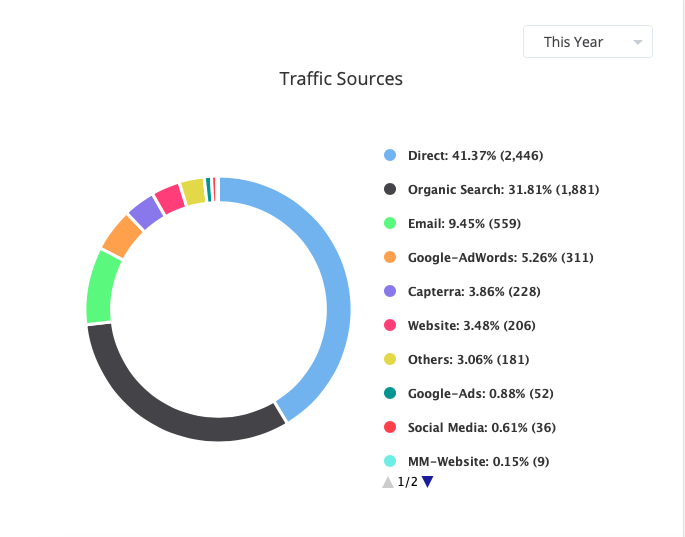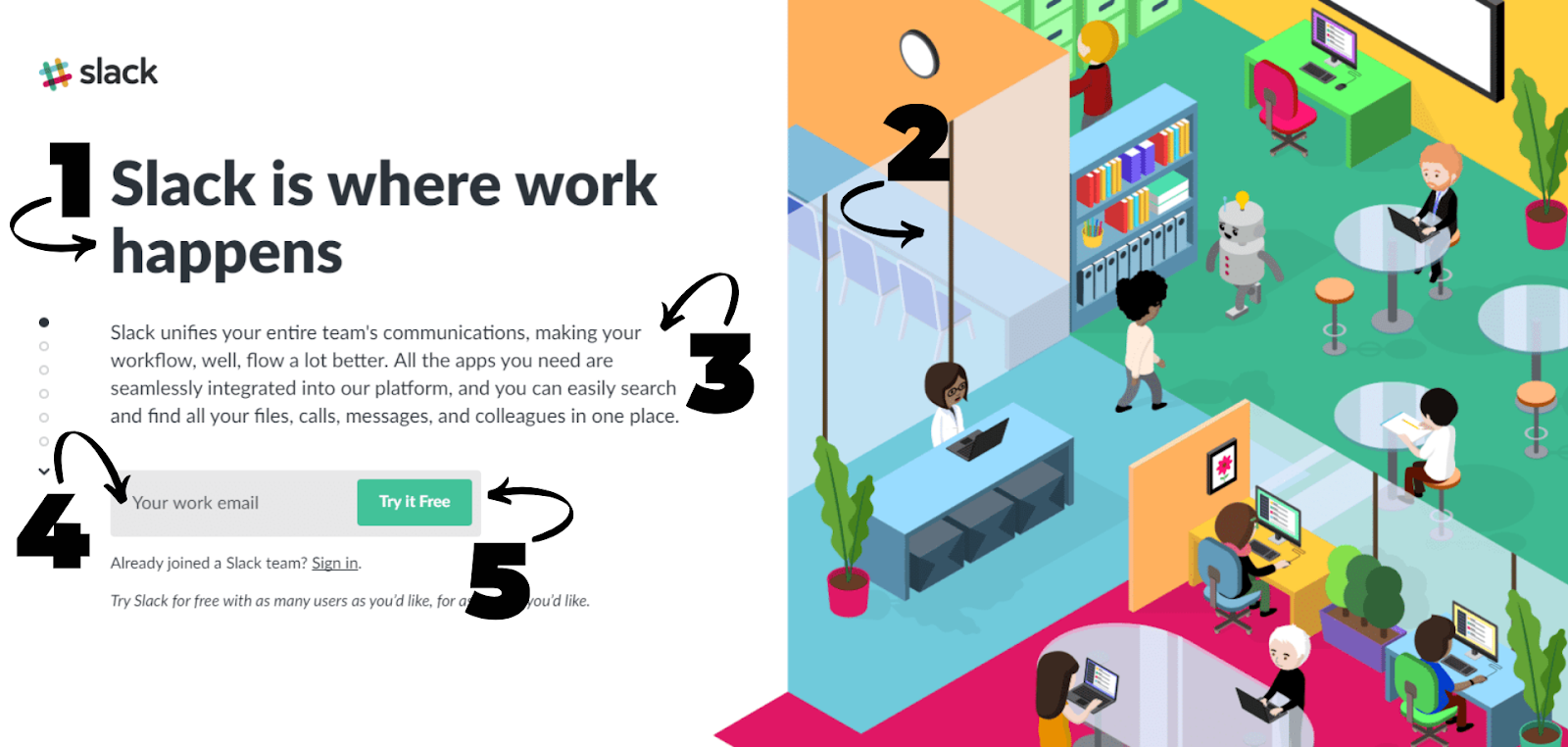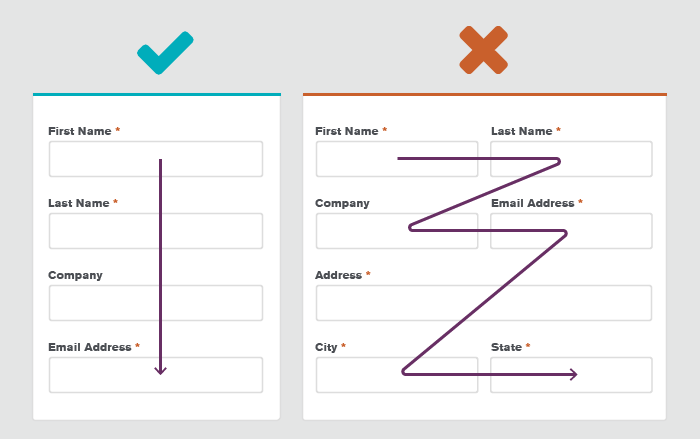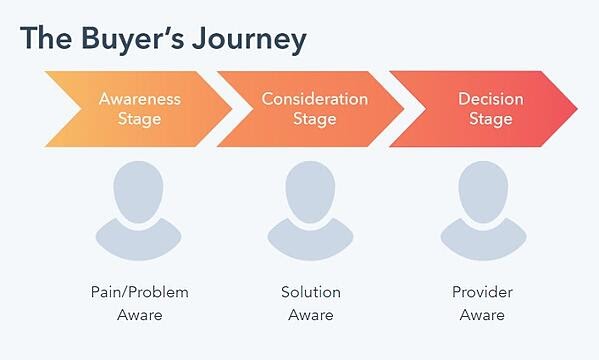An Introduction to Lead Generation
Lead generation is one of the most commonly used words in marketing and sales.
So, what does it mean?
According to HubSpot, a leading marketing automation software, lead generation is defined as “the process of attracting and converting strangers … into someone who has indicated interest in your company’s product or service.”
With this definition comes a lot of questions:
- What is “converting”?
- What’s the difference between a lead and a conversion?
- How is lead generation done?
- Are there different types of leads?
This article breaks down all that and more.
The Best Way to Generate Leads Online
As we mentioned in the introduction to lead generation, it’s a process:
- Create content and/or offer a product or service that helps customers solve their pain points.
- Attract someone who’s never heard of your company before with this content, product, and/or service.
- Entice them to “convert.” This is when someone clicks on a button (also known as a call to action or CTA) and fills out a form.This form could be to request pricing information, a free trial, or demo. It could also be to download long-form content (an ebook, whitepaper, or case study) or sign up for a newsletter.
The lead generation process involves multiple touchpoints.
Remember: It’s very unlikely that someone wants to be sold a product upon their first interaction with your company. They’ll likely download content, sign up for emails, read a blog, or explore product pages first.
They’ll also do this multiple times until they decide that they’re ready for a sales pitch.
A Glossary of Lead Generation Terms
Did you know that there are different types of leads? Depending on where the user is in the buying process and who they’re communicating with, you need to adjust your digital strategy accordingly.
Learn more about the types of leads, according to HubSpot:
- Lead. “A lead is any person who indicates interest in a company’s product or service in some way, shape, or form.”
- Marketing Qualified Lead (MQL). “Marketing qualified leads are contacts who’ve engaged with your marketing team’s efforts but aren’t ready to receive a sales call.” An example of a marketing qualified lead is a user who fills out a form to sign up for the newsletter.
- Sales Qualified Lead (SQL). “Sales qualified leads are contacts who’ve taken actions that expressly indicate their interest in becoming a paying customer.” An example of a sales qualified lead is a user who fills out a form to request a demo or free trial of your software.
- Product Qualified Lead (PQL). “Product qualified leads are contacts who’ve used your product and taken actions that indicate interest in becoming a paying customer.” An example of a product qualified lead is that user who requested a demo or free trial. Once they ask a software consultant or sales rep about upgrading or paying for the complete version of the product, they’re considered a PQL.
- Service Qualified Lead. “Service qualified leads are contacts or customers who’ve indicated to your service team that they’re interested in becoming a paying customer.” Similar to a PQL, a user is considered a service qualified lead when they show intentions of upgrading or paying for your service. The service rep or consultant would then transfer the user to the sales team.
Moving on from differentiating the types of leads, what should you do to get them? What do you do once you have one?
HubSpot, Marketo, Mirabel’s Marketing Manager, and other industry experts dive into defining database marketing, lead scoring, and other important terms:
- Lead scoring. “Lead scoring is a way to qualify leads quantitatively.” Lead scoring uses a numerical value (or score) to determine where leads fall on the scale from “newly interested” to “ready for a sale”.
“The criteria for these actions is completely up to [individual companies], but it must be uniform across your marketing and sales departments.” - Lead quality. Lead quality is “a factor that allows you to identify how likely … prospects are to become … paying customers. The higher the quality of your leads, the more likely they become your customers.”
While it’s great to have a lot of leads, the saying “quality over quantity” does matter. Lead quality is one of the most important considerations before pitching a sale. - Lead nurturing. According to Marketo, “Lead nurturing is the process of developing and reinforcing relationships with buyers at every stage of the sales funnel.”
A successful lead nurturing strategy focuses on solving the lead’s pain points, educating the potential buyer, increasing brand awareness, and maintaining a connection.
A lead nurturing strategy focuses on providing helpful content, consistent communication (email, chat, and/or phone), streamlined branding, and realistic goals for your marketing and sales teams. - Lead-to-customer ratio. This analytic determines how many of your leads become customers. It’s “a percentage calculated by dividing the total number of customers for a given marketing [source] by the total number of leads generated in that same period of time.”
An example would be if you received 40 leads from email marketing in one month. Two of these leads became customers in the same time period. This means that the lead-to-customer ratio for email marketing during this single month was 5%. - Lead sources. A lead or traffic source is a channel that brought a lead to your company for the first time. (Some companies define a lead source as a channel that brought a lead specifically to your website.) Sources are typically divided into online and offline.
A common example of an online source is direct, which is defined as someone typing in your company’s URL directly.
Another go-to online source is search. This could be paid search, like Google Ads, or organic search using SEO techniques.
Referral is another example of a lead source. This is when a lead finds you via another website, also known as backlinking. For example, if www.mirabelsmarketingmanager.com is linked in another company’s blog, and a reader clicked on that link, they would be sourced as a “referral.”
Online sources can get even more granular, depending on your software. It can be drilled down to email, blogging, gated content/landing pages, and/or social media.
Offline sources are a bit harder to track and are usually manually entered (unless the form asks a lead how they heard of the company). These include earned media/public relations, trade shows/networking events/speaking engagements, direct mail, billboards, outbound sales efforts (cold calls, former client lists, in-person referrals), and more.


- Lead database. A lead database is an organized collection of leads that includes individual digital touchpoints, demographic information, and contact information and history. Another term for a lead database is a customer relationship management software or CRM.
A CRM is an incredible software that stores this data for the purpose of nurturing leads. It assists marketing teams in creating and sending content to the right leads, depending on what they’ve already received.
It also assists sales teams by tracking communication. Have they been emailed an introduction? Do they need to schedule a demo? What were the meeting notes from Tuesday?
Defining Lead Generation in Digital Marketing
Now that we understand a bit more about the process of scoring and sourcing leads, let’s take a look at content marketing.
Content is often the catalyst.
Remember: Lead generation is about getting a website visitor to fill out a form.
Exhibit A: Website visitors consistently read your blogs and gain trust. They sign up for your weekly newsletter.
Exhibit B: A company has a pain point and needs a solution. They see your product and/or service can help, so they request a free trial.
Exhibit C: Someone wants to learn more about a certain subject. They find your upcoming webinar tackling these talking points, and they register.
In all of these scenarios, a curious stranger filled out a form and became a lead because of content. Here’s what you need to know about content marketing and lead generation:
- Content. Content is quite simply anything and everything. This term has a wide-reaching definition but is best described by what it can be: A blog, website, infographic, webinar, podcast, video, direct mailer, ebook/guide, checklist, social media post, image/meme, whitepaper, case study, email, template, demo, free trial, or even an online course.
The list goes on and on and on. Check out these Top 10 Content Marketing Types for beginners.
(If you’re a more experienced marketer, read about these content marketing upgrades to elevate your marketing strategy.)
- Gated content. Gated content is a piece of valuable content that visitors cannot access without arriving at a landing page and filling out a form. The goal of gating content is to increase conversions.
- Conversion. A conversion is when a website visitor fills out a form and becomes a lead. That act of submitting a form is called a conversion. The visitor has converted and requests the offered content in return.
- Landing page. “A landing page is a page on your site that is designed to convert visitors into leads. It’s different from other pages on your website in that it … has a form that allows you to capture a visitor’s information in exchange for a desired offer.” The offer is usually one of the content pieces listed above.
“The sole purpose of the landing page is to convert visitors into leads (a homepage with a form on it doesn’t count as a landing page because it serves other purposes as well).”
To explore landing page best practices and how to utilize this marketing technique, read Here’s How to Get Started with Landing Pages.


- Form. A form is a set of input fields that a website visitor fills out in exchange for an offer. It captures the visitor’s basic information, including name and email. It may ask for subsequent information like company name or phone number.
Learn more about how to design the perfect form with 11 Ways to Create Effective Landing Page Forms.


- Buyer’s persona. This is meant to represent the type of person who might purchase your product or service. Persona research is a foundational step to every digital marketing strategy, as it determines who your lead generation campaigns will target.
Personas are defined by their demographics (gender, age), education level, professional details (job title, company, salary), personal interests, digital literacy, and so on.
- Content management system (CMS). A content management system is a software that designs, manages, and publishes digital content. It allows multiple marketers and salespeople to organize and streamline blogs, webpages, images, videos, and more.
Examples of popular content management systems include WordPress, Squarespace, Wix, Drupal, Joomla!, and Magento.
- X-of-the-funnel content. Oftentimes, marketers create content based on where a lead is in the buying process (also known as the buyer’s journey). The buying process is usually divided into a three-stage funnel: Top, middle, and bottom. Because of this, content is often described as top-, middle-, or bottom-of-the-funnel, representing the awareness, consideration, and decision stages of the process.
Top-of-the-funnel content is educational and helpful, as leads are becoming aware of the product, service, and/or company.
Middle-of-the-funnel content gauges a lead’s readiness to purchase. It combines educational content with a soft sell of a product or service. The goal is to respond to pain points: “This is how we can help you.”
Bottom-of-the-funnel content talks about the value of your product or service. It details pricing, features, competitor comparisons, and more. It’s for leads who know they need a solution, so they’re the most ready to purchase. They’re deciding if you’re the best solution.


(If you’re a more experienced marketer, read about HubSpot’s Flywheel Model, an overdue update to the “funnel” concept of the buyer’s journey.)
- Call to action. Often shortened to CTA, a call to action is the literal button that links to a landing page. This button is designed to facilitate turning a website visitor into a lead.


Conclusion
Online lead generation is vital to every company, and digital marketing teams are responsible for understanding the ins and outs.
Whether you adjust your strategy to gate valuable content or add more CTAs on webpages, these lead generation ideas will increase conversions and attract high-quality potential customers.
If you need help with lead generation, consider Mirabel’s Marketing Manager. This all-in-one software assists with lead scoring and organizing your contacts in a CRM.
Click below to learn more about this software.
SEE FOR YOURSELF
Watch an overview to learn how B2B marketing automation by Mirabel Technologies can help you increase traffic, optimize your funnel, drive more leads, improve conversions, and boost ROI — at a price you can afford!
Lead Generation

